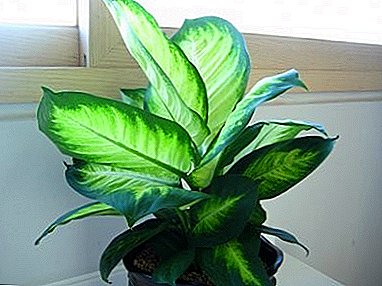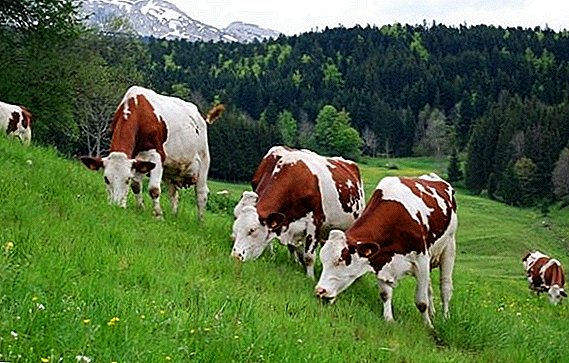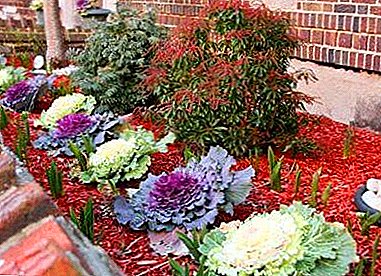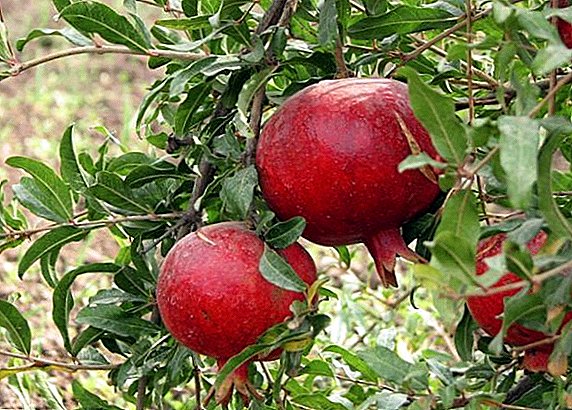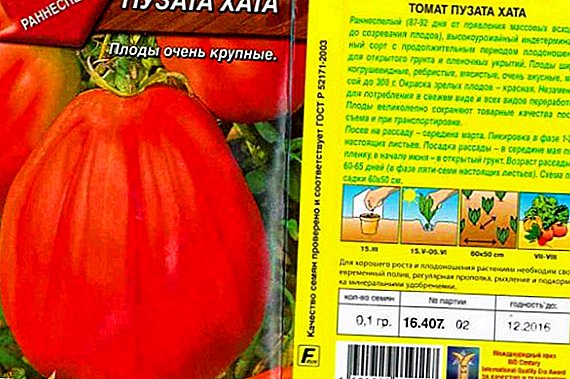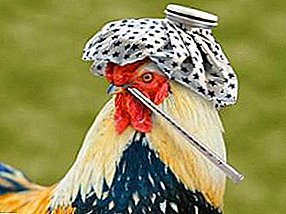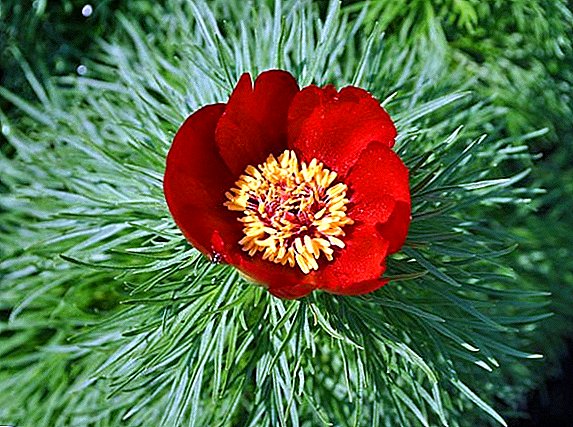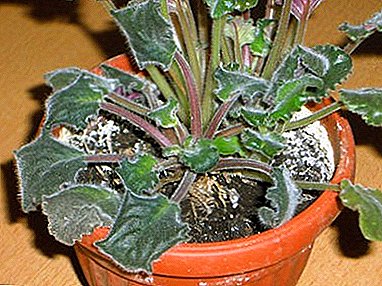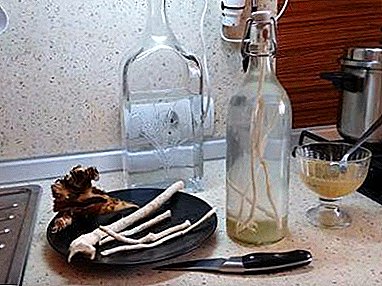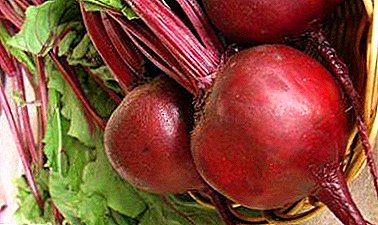
Beetroot is one of the best varieties of culture cultivated in Russia. It has a pleasant sweet taste and is characterized by the absence of cylindrical rings, which is important for taste.
This variety is unpretentious in the care, but still some of the nuances worth considering. This article talks about the rules of planting and further care, as well as the prevention of common diseases. With proper care, the gardener will be rewarded with a big harvest.
Description
A small rosette of beets grows straight. Oval leaves with reddish streaks, painted in a light green color, have wavy edges. Fruits of a rounded shape are characterized by a smooth and smooth to the touch surface with a brilliantly glossy sheen. The skin is colored dark burgundy. The juicy pulp of a dense consistence differs in pleasant sweet taste. The weight of root crops varies from 160 to 350 grams. The diameter of the vegetable is ten - twelve centimeters. The axial root is painted in violet color.
The variety is characterized by a high level of yield: from four to five kilograms of fruit can be collected from a square meter of planting. A single hectare plantation can produce about four tons of high-quality fruit. Defective tubers come across only in two percent of cases, which is a very low figure. The variety is middle-ripening, which means that the first roots can be harvested within four months after planting.
Plant photo
Here you can see how Mulatka table beet looks like:


Breeding history
Mulatto variety belongs to the varieties of domestic breeding, since it was brought out by Russian scientists almost thirty years ago, in the late eighties. An extensive list of advantages of this type of beet has been appreciated in many other countries, and now it is actively cultivated not only in Russia, but also in Moldova, as well as in Ukraine. The popularity of the variety is constantly growing due to the high taste of the fruit and excellent keeping quality.
Difference from others
A variation called "Mulatto" has serious advantages that distinguish it from other beet varieties. In the dense juicy pulp there are no whitish cylindrical rings, the entire consistency is homogeneous. This characteristic is essential because the cylindrical rings seriously degrade the taste of the beets during cooking.
"Mulatto" is great for culinary experiments, not only due to the preservation of a pleasant taste, but also the invariance of a rich burgundy color that is not lost even during heat treatment.
Advantages and disadvantages
"Mulatto" has an extensive list of advantageswhich outweigh the possible disadvantages. Grade advantages:
- undemanding of soil composition;
- lack of whitish cylindrical rings that impair taste;
- preservation of saturated color during heat treatment;
- sweet taste of root crops;
- long shelf life - beets can be eaten in winter;
- resistance to tsvetushnosti and temperature drops;
- high yield;
- preservation of the presentation during transportation, which allows cultivation of crops on an industrial scale;
- low rejection rates;
- the possibility of growing on personal plots and large farm plantations;
- resistance to the appearance of arrows.
Among the shortcomings, there is only one negative trait - demanding regarding the level of illumination.
Application
 Beet "Mulatto" varieties are widely used in cooking due to the absence of rings that deteriorate the taste and preserve the original color even after exposure to temperature. Root vegetables of this variety are ideal for cooking a popular Russian dish called "borsch".
Beet "Mulatto" varieties are widely used in cooking due to the absence of rings that deteriorate the taste and preserve the original color even after exposure to temperature. Root vegetables of this variety are ideal for cooking a popular Russian dish called "borsch".
It turns saturated red because the color is not lost under the influence of heat treatment. Fruits are suitable for preservation and preparation of salads, for example, the famous vinaigrette. "Mulatto" often becomes a product included in the diet menu. Due to the large number of useful substances contained in beets, it is used in traditional medicine., to strengthen blood vessels, normalize blood pressure and support the work of the heart muscle.
Growing up
Cultivation of red beet in the open field requires the possession of certain knowledge and awareness of the nuances of vegetable cultivation.
Purchase and preparation of material
You can buy seeds of the variety “Mulatto” everywhere in gardening shops or via the Internet. The cost of a two-gram sack of seeds varies from seven to twenty rubles, depending on the region of residence.
Before sowing in open ground or in a container, seeds are prepared so that seedlings appear earlier. To do this, mix a solution of ten liters of water, a teaspoon of baking soda, the same amount of superphosphate and wood ash. Planting material is poured with liquid for exactly two hours, then washed under running warm water and placed in a dry cloth.
Sowing time
Beets can be planted in open ground around April or May. The main reference is the temperature of the soil: the earth should warm up to ten degrees at a depth of ten centimeters.
Site selection and soil preparation
The variety requires a high level of illumination, so for the beet pick up an open area with unhindered access to sunlight. The "mulatto" can grow on almost any soil, but it cannot be cultivated in places of a marshy type. It is necessary to pay attention to the acidity of the soil: beets are comfortable in the soil with a low or neutral pH.
When choosing a site must use the principle of crop rotation. The best predecessors for beets are: onions, tomatoes, potatoes, cucumbers. The place where cabbage and carrots used to grow was not suitable. Next to the beets are advised to plant onions, radishes, beans and cucumbers. Spinach, leek, potatoes, celery and corn are not suitable for culture. It is possible to return the beets to the former site only after three or four years.
Prepare the soil for planting in the fall. To begin with, they pull out all the weeds, then dig up the earth and add fertilizers: ten kilograms of compost, humus or manure per square meter. 400 or 500 grams of hydrated lime are put into the soil with a high level of acidity.
Planting process
 Sow beets in open ground in two ways: single-line or two-line. Single-line method involves landing in the line, separated from each other in forty-five centimeters. The second method involves the construction of two lines at a distance of twenty-five centimeters from each other and the creation of another pair of lines with an interval of fifty centimeters from the previous group.
Sow beets in open ground in two ways: single-line or two-line. Single-line method involves landing in the line, separated from each other in forty-five centimeters. The second method involves the construction of two lines at a distance of twenty-five centimeters from each other and the creation of another pair of lines with an interval of fifty centimeters from the previous group.
The sequence of actions on sowing is as follows:
- the grooves are well watered, waiting until the moisture is fully absorbed;
- seeds are planted in the ground, keeping a distance of five or ten centimeters, dropping them to a three-centimeter depth;
- planting material covered with soil;
- departing from the landings by ten centimeters, we carry out weeding with a usual hoe so that oxygen can reach the planted beets without hindrance.
Important! From each seed you get several plants, so thinning plantings can not be avoided. As soon as the sprouts appear two leaves, thinning is carried out, leaving a two-centimeter distance between the seedlings. The second time they resort to this procedure after the development of four or five leaflets.
Content temperature
The optimum temperature for germination is 20 degrees., although they begin to germinate at lower temperatures. During growth and development, the beets feel comfortable if the air warms up to thirty degrees.
Watering
Beets are watered about twice a week, focusing on the condition of the soil. Drought and excess moisture have a negative effect on the state of tubers. In the first case, they will stop hard and bitter, reduced storage time. An excess of liquid provokes the wateriness of the fruit and the rotting of the root system. For irrigation use separated water heated to air temperature. Cold water adversely affects the development of the plant.
Problem prevention
As a preventive measure, you must follow the rules for the cultivation of beets. In order to prevent the appearance of aphids and shield beetles, they observe crop rotation, get rid of weeds in a timely manner and dig up the ground. They prevent the occurrence of beet flea by treating the soil with wood ash. The likelihood of development of powdery mildew will disappear if there is no time to remove plant residues from the site and follow the principles of crop rotation.
Top dressing
 The plant is regularly fed to get a rich and healthy crop. Especially beet like organic fertilizer nature. After the first thinning, add 10 grams of potassium chloride and superphosphate, as well as 5 grams of ammonium nitrate per square meter.
The plant is regularly fed to get a rich and healthy crop. Especially beet like organic fertilizer nature. After the first thinning, add 10 grams of potassium chloride and superphosphate, as well as 5 grams of ammonium nitrate per square meter.
Suitable solution made from mullein or bird droppings. For 10 square meters of landing will require twelve liters of solution. Combine two types of fertilizers can not. As soon as the seedlings grow to the extent that they begin to touch the leaves with the neighboring plants, carry out another feeding. Wood ash is scattered around the bed (one glass per 1.5 square meters), after which the earth is poured.
Other care
After watering, the soil is necessarily loosened to avoid the appearance of a soil crust. The procedure will help the air easier to penetrate to the roots, which will develop more actively with its free access. Another important treatment procedure is weeding, which removes all weed plants that hinder the development of beets.
Harvesting and Storage
Crop harvested before the onset of the first frost. To begin with, the tubers break in with pitchforks and remove excess earth from them. Using a sharp knife, cut the tops. You can store fruits that do not show signs of rotting and damage. High-quality root crops laid out in boxes or containers in several layers, separating them from each other with shavings or sawdust. Store the crop at temperatures from zero to two degrees.
Diseases and pests
If you violate the conditions of detention, the plant will weaken and be attacked by parasites, and also become vulnerable to disease. Gardeners who grow Mulatka should be wary of powdery mildew, root grass, fomoz, kagatnaya rot, aphids, shield beetle and beet flea. All problems are eliminated through the use of special preparations.
Mulatto beet is a popular variety grown in many Russian orchards. Sweet tubers are suitable for culinary preparation and use in traditional medicine.


